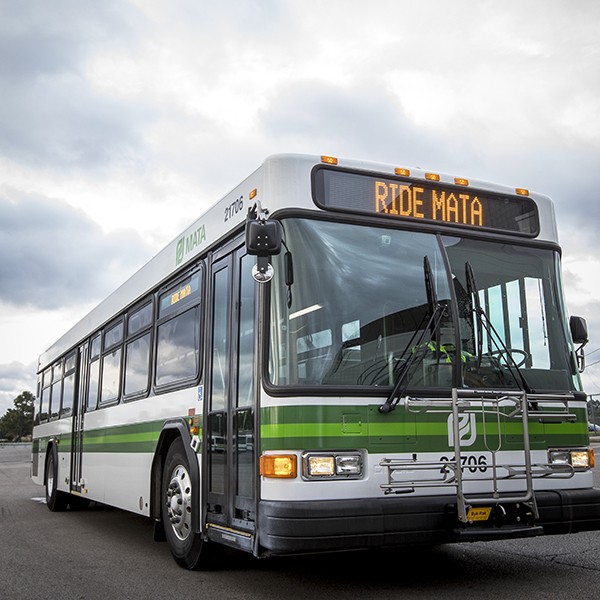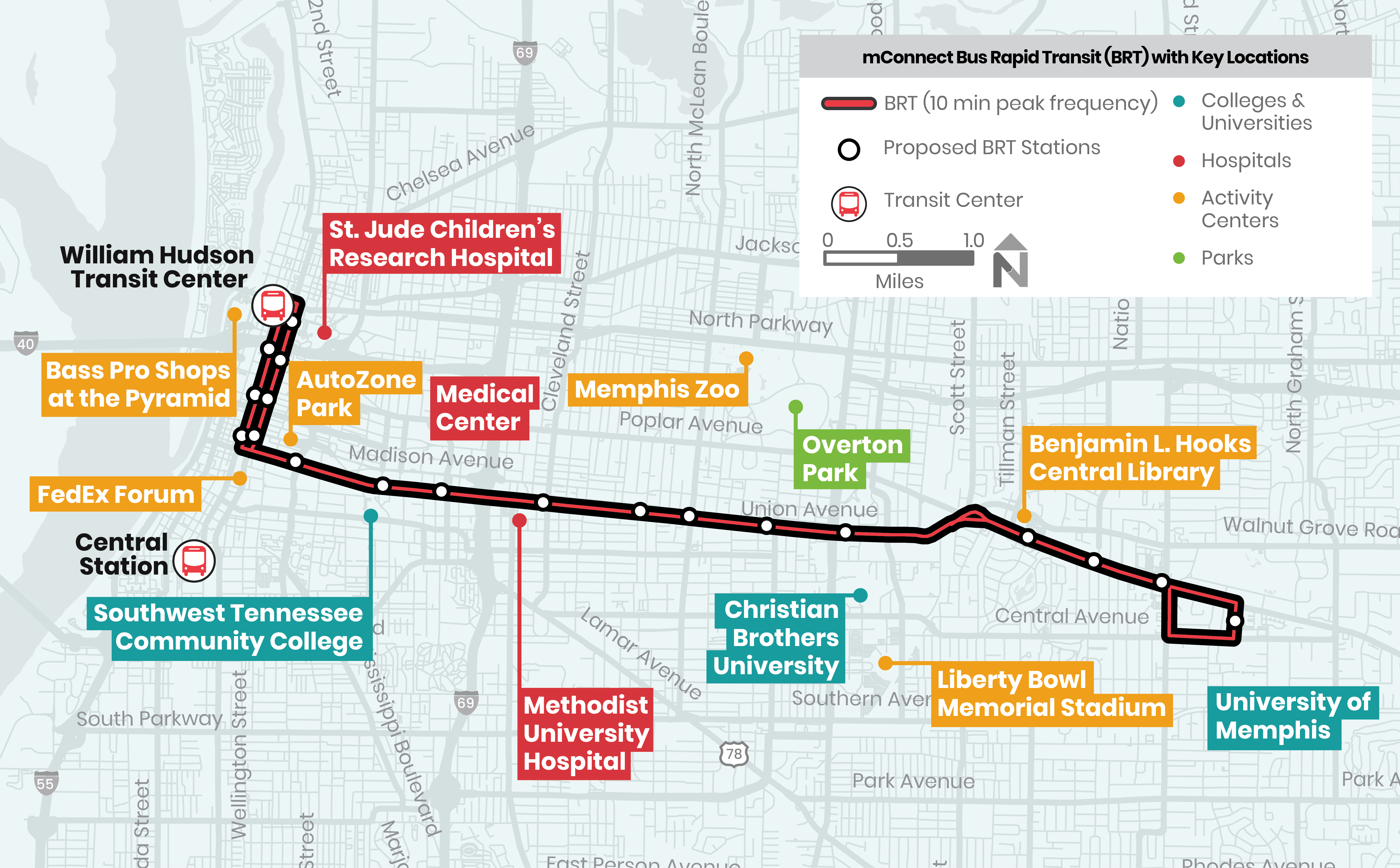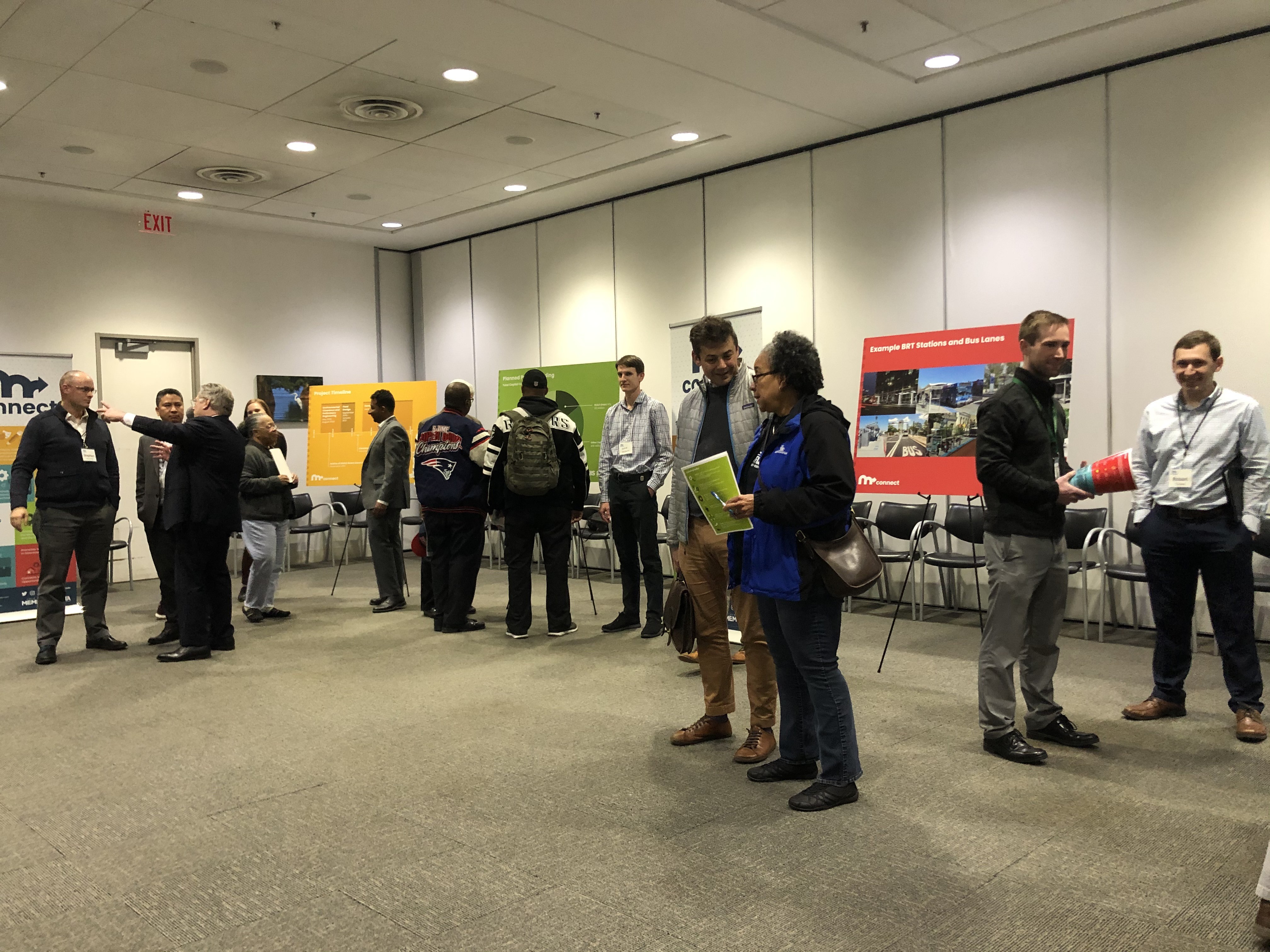Construction of the Memphis Innovation Corridor, the first bus rapid transit (BRT) service in Memphis, is tentatively scheduled to begin in fall 2023, with service beginning in the spring of 2027, according to Memphis Area Transit Authority (MATA).
The Memphis Innovation Corridor is about an eight-and-a-half mile route that connects the William Hudson Transit Center, that goes east and west along Union Avenue, a portion of Poplar Avenue, connecting at the University of Memphis. MATA said it is an important step in remaking transit in Memphis.
The Corridor will be a bus route that operates like a rail line, with 31 stops along the way, said John Lancaster, MATA’s chief development officer. Lancaster also said that these will include amenities such as ticket vending machines and real time information. All the stations are also slated to be ADA accessible.
“We really want to improve the travel time and reliability for transit customers,” said Lancaster. “With Bus Rapid Transit we have more frequent operations. We’re proposing a 10-minute headway – that’s how often the buses come.”
In 2016, BRT was adopted as the “preferred transit solution,” for the Memphis Innovation Corridor, said MATA. The organization also said that in 2019, the U.S. Department of Transportation awarded a $ 12 million Better Utilizing Investments to Leverage Developments (BUILD) grant to the city of Memphis for the design and construction of
BRT offers a “higher level of service,” said Lancaster. He said it’s much more reliable, and there are definitive stops that are spaced efficiently. There are also about 15 other bus routes that will connect to this corridor that will improve connections with the route, which will also improve travel times, Lancaster explained.
The project will also use electric buses, which will make it “more environmentally sustainable.”
“On the infrastructure side, those safety benefits benefit the environment in terms of emissions,” said Kenny Monroe of Kimley-Horn: Planning and Design Engineering Consultants. Monroe also serves as a project manager on the consulting team for MATA.
Monroe also said that hopefully more people will shift from passenger cars to buses as a result of BRT.
MATA’s goal is to provide “high-quality transit service,” and not only does this project increase ridership, but it lowers transportation for the people who live in the corridor. Lancaster also said this aligns with the city of Memphis’ comprehensive plan. The city also developed a Transit Oriented Development plan.
“All of these things help provide better access to jobs, medical services, educational opportunities, and it reduces the dependency on single-occupant vehicles,” Lancaster said.
The project will also include Downtown intersection improvements such as reduced pedestrian crosswalks, improved pedestrian striping and signals, as well as bioswales, which will help with stormwater runoff and drainage, said Monroe.
There will also be traffic signal improvements, said Monroe. There are 52 traffic signals along the corridor, and about 42 of them will be improved as a part of this project.
“There will be transit signal priority,” said Monroe. “Basically if a bus is behind schedule, it notifies the system, and the signals will react to help get that bus back on schedule.”
“It’s a transit project but it’s a complete infrastructure project that includes roadways, sidewalks, traffic signals, lighting [and] street lights,” said Lancaster. “It includes the buses and transit too, but it’s a lot of improvements for the city that people may not realize is happening.

 Justin Fox Burks
Justin Fox Burks 
